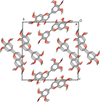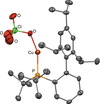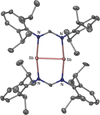issue contents
September 2021 issue

Cover illustration: Six CuI complexes containing 2-di-tert-butylphosphanyl-2′,4′,6′-triisopropylbiphenyl (tBuXPhos) and an ancillary ligand were prepared and characterized. A weaker interaction between the metal and ancillary ligand was observed to result in a stronger copper–arene interaction. See Woodhouse, Buchanan, Dais, Ainscough, Brodie, Freeman & Plieger [Acta Cryst. (2021), C77, 513–521].
research papers


 access
access

 access
access



















 journal menu
journal menu




























